#stored procedure results capture
Explore tagged Tumblr posts
Text
Dynamically Capturing Stored Procedure Outputs in SQL Server Without Prior Schema Knowledge
Efficiently Capturing Stored Procedure Output in SQL Server Storing the results of a stored procedure dynamically in SQL Server can be challenging, especially when the structure of the output is unknown or may change over time. Traditional methods like INSERT INTO ... EXEC ... require prior knowledge of the stored procedure’s output structure, and options like OPENROWSET may not always be viable…
View On WordPress
#Dynamic SQL execution#DynamicTempTable#handling unknown stored procedure output#SQL Server dynamic tables#stored procedure results capture#temporary table creation
0 notes
Text

Hubble Space Telescope: Exploring the Cosmos and Making Life Better on Earth
In the 35 years since its launch aboard space shuttle Discovery, the Hubble Space Telescope has provided stunning views of galaxies millions of light years away. But the leaps in technology needed for its look into space has also provided benefits on the ground. Here are some of the technologies developed for Hubble that have improved life on Earth.

Image Sensors Find Cancer
Charge-coupled device (CCD) sensors have been used in digital photography for decades, but Hubble’s Space Telescope Imaging Spectrograph required a far more sensitive CCD. This development resulted in improved image sensors for mammogram machines, helping doctors find and treat breast cancer.

Laser Vision Gives Insights
In preparation for a repair mission to fix Hubble’s misshapen mirror, Goddard Space Flight Center required a way to accurately measure replacement parts. This resulted in a tool to detect mirror defects, which has since been used to develop a commercial 3D imaging system and a package detection device now used by all major shipping companies.

Optimized Hospital Scheduling
A computer scientist who helped design software for scheduling Hubble’s observations adapted it to assist with scheduling medical procedures. This software helps hospitals optimize constantly changing schedules for medical imaging and keep the high pace of emergency rooms going.

Optical Filters Match Wavelengths and Paint Swatches
For Hubble’s main cameras to capture high-quality images of stars and galaxies, each of its filters had to block all but a specific range of wavelengths of light. The filters needed to capture the best data possible but also fit on one optical element. A company contracted to construct these filters used its experience on this project to create filters used in paint-matching devices for hardware stores, with multiple wavelengths evaluated by a single lens.
Make sure to follow us on Tumblr for your regular dose of space!

2K notes
·
View notes
Text
The Best News of Last Year - 2024 Edition
Welcome to our special edition newsletter recapping the best news from the past year. I've picked one highlight from each month to give you a snapshot of 2024. No frills, just straightforward news that mattered. Let's relive the good stuff that made our year shine.
1. January - South Korea passes law banning dog meat trade
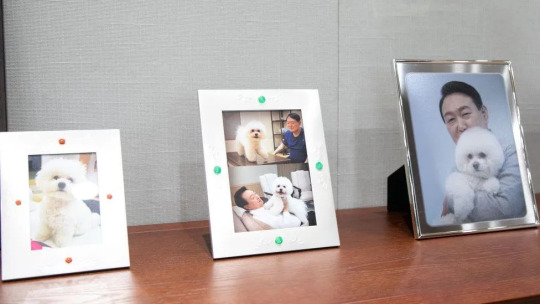
The slaughter and sale of dogs for their meat is to become illegal in South Korea after MPs backed a new law. The legislation, set to come into force by 2027, aims to end the centuries-old practice of humans eating dog meat.
2. February - Greece legalises same-sex marriage

Greece has become the first Christian Orthodox-majority country to legalise same-sex marriage. Same-sex couples will now also be legally allowed to adopt children after Thursday's 176-76 vote in parliament. Prime Minister Kyriakos Mitsotakis said the new law would "boldly abolish a serious inequality".
3. March - Global child deaths reach historic low in 2022 – UN report

The number of children who died before their fifth birthday has reached a historic low, dropping to 4.9 million in 2022. The report reveals that more children are surviving today than ever before, with the global under-5 mortality rate declining by 51 per cent since 2000.
4. April - Restoring sight is possible now with optogenetics
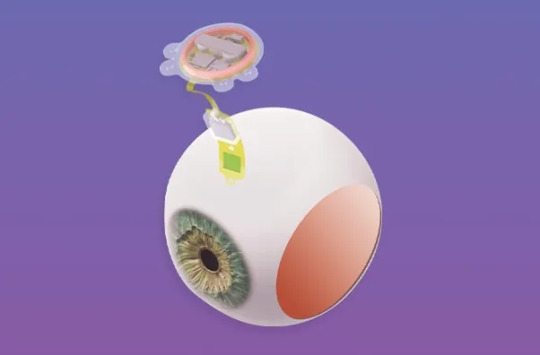
Max Hodak's startup, Science, is developing gene therapy solutions to restore vision for individuals with macular degeneration and similar conditions. The Science Eye utilizes optogenetics, injecting opsins into the eye to enhance light sensitivity in retinal cells. Clinical trials and advancements in optogenetics are showing promising results, with the potential to significantly improve vision for those affected by retinal diseases.
5. May - Vaccine breakthrough means no more chasing strains
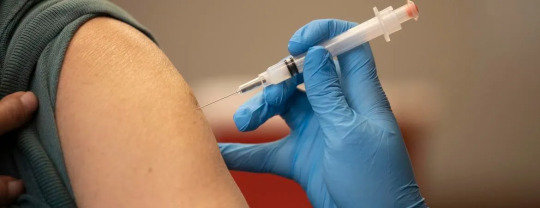
Scientists at UC Riverside have demonstrated a new, RNA-based vaccine strategy that is effective against any strain of a virus and can be used safely even by babies or the immunocompromised.
6. June - Bill Gates-backed startup creates Lego-like brick that can store air pollution for centuries
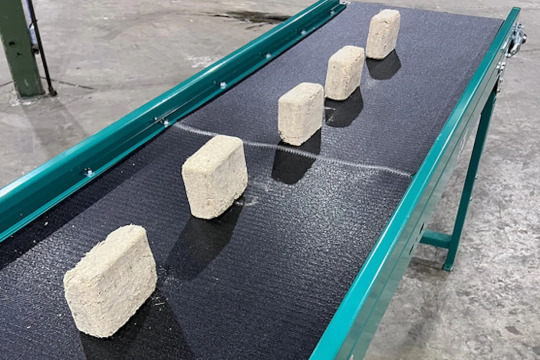
The Washington Post detailed a "deceptively simple" procedure by Graphyte to store a ton of CO2 for around $100 a ton, a number long considered a milestone for affordably removing carbon dioxide from the air. Direct air capture technologies used in the United States and Iceland cost $600 to $1,200 per ton, per the Post.
7. July - Stem cell therapy cures man with type 2 diabetes
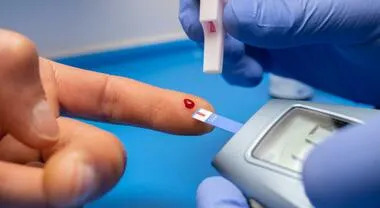
A 59-year-old man had been suffering from diabetes for 25 years, needing more and more insulin every day to avoid slipping into a diabetic coma and was at risk of death. But then Chinese researchers cured his disease for the first time in the world. The patient received a cell transplant in 2021 and has not taken any medication since 2022.
8. August - Chinese drones will fly trash out of Everest slopes
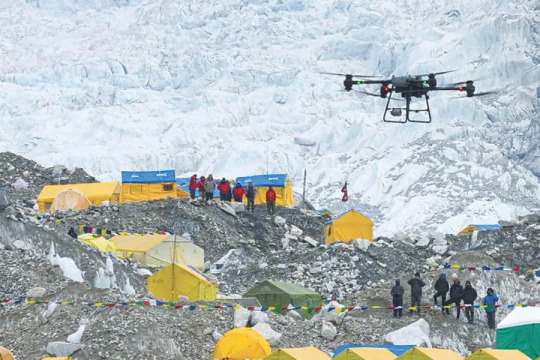
Come autumn, Nepal will deploy heavy lifter drones to transport garbage from the 6,812-metre tall Ama Dablam, south of Everest. This will be the first commercial work an unmanned aerial vehicle does in Nepal’s high-altitude zone.
9. November - Tokyo to make day care free to boost birth rate

Tokyo plans to make day care free for all preschool children starting in September, the city governor has announced as part of efforts to boost Japan's low birth rate.
10. October - FTC Rule Banning Fake Product Reviews Takes Effect With Stiff Penalties

Federal Trade Commission (FTC) Chair Lina Khan announced on Oct. 21 that the agency’s prohibition on fake online reviews was taking effect, imposing fines as high as $50,000 for violations. Khan encouraged followers to report the proscribed practices at reportfraud.ftc.gov.
11. November - Bumblebee population increases 116 times over in 'remarkable' Scotland rewilding project

The bumblebee population has made an impressive comeback in a developed area by increasing to 116 times what it was two years ago thanks to a nature restoration group.
12. December - Spain to enshrine gay marriage and abortion rights into its constitution so 'they cannot be undone in the future'

The left-wing PSOE leader made the announcement at an event marking the 46th anniversary of the Spanish Magna Carta.
“We believe that these are rights that we must protect in the Constitution so that no one can touch them in the future,” Sanchez said in a statement in parliament on Friday.
----------
That's it for last year :)
This newsletter will always be free. If you liked this post you can support me with a small kofi donation here:
Buy me a coffee ❤️
Also don’t forget to share this post with your friends.
465 notes
·
View notes
Text
IBM Analog AI: Revolutionizing The Future Of Technology

What Is Analog AI?
The process of encoding information as a physical quantity and doing calculations utilizing the physical characteristics of memory devices is known as Analog AI, or analog in-memory computing. It is a training and inference method for deep learning that uses less energy.
Features of analog AI
Non-volatile memory
Non-volatile memory devices, which can retain data for up to ten years without power, are used in analog AI.
In-memory computing
The von Neumann bottleneck, which restricts calculation speed and efficiency, is removed by analog AI, which stores and processes data in the same location.
Analog representation
Analog AI performs matrix multiplications in an analog fashion by utilizing the physical characteristics of memory devices.
Crossbar arrays
Synaptic weights are locally stored in the conductance values of nanoscale resistive memory devices in analog AI.
Low energy consumption
Energy use may be decreased via analog AI
Analog AI Overview
Enhancing the functionality and energy efficiency of Deep Neural Network systems.
Training and inference are two distinct deep learning tasks that may be accomplished using analog in-memory computing. Training the models on a commonly labeled dataset is the initial stage. For example, you would supply a collection of labeled photographs for the training exercise if you want your model to recognize various images. The model may be utilized for inference once it has been trained.
Training AI models is a digital process carried out on conventional computers with conventional architectures, much like the majority of computing nowadays. These systems transfer data to the CPU for processing after first passing it from memory onto a queue.
Large volumes of data may be needed for AI training, and when the data is sent to the CPU, it must all pass through the queue. This may significantly reduce compute speed and efficiency and causes what is known as “the von Neumann bottleneck.” Without the bottleneck caused by data queuing, IBM Research is investigating solutions that can train AI models more quickly and with less energy.
These technologies are analog, meaning they capture information as a changeable physical entity, such as the wiggles in vinyl record grooves. Its are investigating two different kinds of training devices: electrochemical random-access memory (ECRAM) and resistive random-access memory (RRAM). Both gadgets are capable of processing and storing data. Now that data is not being sent from memory to the CPU via a queue, jobs may be completed in a fraction of the time and with a lot less energy.
The process of drawing a conclusion from known information is called inference. Humans can conduct this procedure with ease, but inference is costly and sluggish when done by a machine. IBM Research is employing an analog method to tackle that difficulty. Analog may recall vinyl LPs and Polaroid Instant cameras.
Long sequences of 1s and 0s indicate digital data. Analog information is represented by a shifting physical quantity like record grooves. The core of it analog AI inference processors is phase-change memory (PCM). It is a highly adjustable analog technology that uses electrical pulses to calculate and store information. As a result, the chip is significantly more energy-efficient.
As an AI word for a single unit of weight or information, its are utilizing PCM as a synaptic cell. More than 13 million of these PCM synaptic cells are placed in an architecture on the analog AI inference chips, which enables us to construct a sizable physical neural network that is filled with pretrained data that is, ready to jam and infer on your AI workloads.
FAQs
What is the difference between analog AI and digital AI?
Analog AI mimics brain function by employing continuous signals and analog components, as opposed to typical digital AI, which analyzes data using discrete binary values (0s and 1s).
Read more on Govindhtech.com
#AnalogAI#deeplearning#AImodels#analogchip#IBMAnalogAI#CPU#News#Technews#technology#technologynews#govindhtech
4 notes
·
View notes
Text
File: OC 28
SCP#: AIM
Code Name: Vote yes for Corn!
Object Class: Keter
Special Containment Procedures: Due to the difficult to avoid Cognito Hazardous properties of SCP-AIM all instances are to be destroyed. Joint Task Force Apollo-9 “The Kernel Path” is responsible for finding all remaining traces of SCP-AIM’s effect and possible replicas. Mobile Task Force Apollo-4 “Speak no Evil” is responsible for finding unfortunate victims of SCP-AIM and terminating them. They are to always prioritize those of political power, especially those working under the SCP Foundation.
The only instance of SCP-AIM that is allowed to be contained is the golden corn it is originally created form. Samples of said corn has been stored at Site-AB within the level 3 Biological Cognito-Hazardous labs. they are stored within a 6x6 meter lab within the level 3 area with all of the science equipment and tools needed for testing and experimentation. Only Foundation staff of Level 3 or Higher may enter its lab and perform testing. Because the gold corn is rare and difficult to obtain, they must be careful as to not experiment too heavily with or at least only experiment with a single kernel at a time.
Description: SCP-AIM was originally a cob of golden corn that was later harvested and forged into political pins shaped like corn. This corn was created by Group of Interest: Children of the Corn more specifically the iteration known as By the Harvest. Members of this cult have their adult slaves forge these pins to place them on adults within the political world. The instances of SCP-AIM do not force the adults they are put on to become brain dead but instead allow them to remain as they once were. The only difference is that now they are determined to further the goals of the Children of the Corn and that is to infect all the children of the world with the influence of “He Who Walks Behind the Row”.
They will pass or support laws that help farmers and other labor workers making them seem like those who fight for the people. Generally, these are good laws, but they are used for anything but, as it merely helps the GoI get away with mass producing and harvesting SCP-AHP. The end goal of all adults under the control of SCP-AIM instances is to rise in political power and eventually become the president or other high ranking political figures to ensure the Children of the Corn rule over the US forever.
Unfortunately, it is an extremely easy task for them as SCP-AIM also grants its host's the ability to hypnotize any adult who stands in their way. Like the child members within By the Harvest the victims of SCP-AIM are able to use a type of magic unique to the cult that allows them to turn their victims into brain-dead slaves. They are smart enough to know this will increase the risk of their work being exposed and thus is normally used as a last resort. Though it has been proven possible for them to insert a few personality traits into their brain-dead slaves to at least make them seem alive.
Shockingly victims of SCP-AIM are prepared even for failure, when they’ve been exposed or are close to losing their influence, they will make a public announcement of stepping down as a politician. Afterwards they will return to their master's and be sacrificed to their corn. This will result in another golden corn cob being grown and thus allow more SCP-AIM instances to be created ensuring the cycle never stops. There is also a defense mechanism within the SCP-AIM pin that not only makes the brain of its victim rot, but it also dries up ensuring anyone who has captured a victim will not be able to gain any information from them.
SCP-AIM was discovered in 1995 when the cult iteration known as By the Harvest started moving to urban cities to increase their production of SCP-AHP. Eventually through experimental rituals they created the golden corn and by extension SCP-AIM. Thankfully the Foundation started catching on when politicians within [data expunged], Illinois started making unexpectedly pleasant choices to increase labor protection and promote farming of corn. When it was exposed that the Children of the Corn were behind it all MTF Apollo-4 were sent in and started culling infected leaders. In the meantime, the culling of the cult was left to Joint Task Force Apollo-9.
JTF Apollo-9 is composed of Foundation MTF units and GOC troopers to ensure maximum efficiency in location of anomalies and destruction. This Joint Task Force was created as the GOC unfortunately had a few of the politicians under their own control falling to SCP-AIM as well. Thus, it was agreed by both organizations to have the anomalous items found and destroyed. Unfortunately, even looking or touching the SCP-AIM pins leads to becoming a slave to the host or the cult and thus it was agreed to allow the GOC to destroy them all. Because of this it is the duty of JTF Apollo-9 units to record all they have observed of SCP-AIM and its victims that are still out there. Anything else will be learned from the few Colden Corn cobs that are found in the custody of By the Harvest.
.
SCP: Horror Movie Files Hub
#DZtheNerd#SCP: Horror Movie Files#SCP: HMF#SCP Foundation#SCP Fanfiction#SCP AU#SCP#SCP Fanmade#Children of the Corn#Horror#Horror Movie#Movie#Movie Series#SCP-AIM#Site-AB#Keter#Mobile Task Force Apollo-4 “Speak no Evil”#SCP MTF#SCP Mobile Task Force#MTF#Mobile Task Force
2 notes
·
View notes
Text
Little space colony/ floating city/ carved out mountain city/ what have you whose power is generated by sonoluminescent cavitation boilers (like the light produced from a pistol shrimp claw blast thing, where a bubble is formed underwater simply from the pressure of the shockwave, the same is done largescale with resonance and feedback loops)
Because of the size of the boilers and the energy involved, a much much denser liquid is used (maybe even like a tar, an amber? Maybe liquid glass? Superheated heavy metal?) and a much much larger solitary bubble is produced, collapsed, cavitated, and then the energy of that radiation emission is captured.
The way the sound is produced at a low energy cost is by using feedback loops of enormous glass bells and tubes and harmonic metal tines and springs, it results in an 'apprehension engine' sounding hum, both low and high pitch, that builds to an immense and wildly dangerous volume, building up static energy in the air around it and messing with pretty much everything, then, when the bubble collapses, there's what is functionally a shockwave earthquake through the whole colony.
About every 4 hours (every 3 hours and 59 minutes to be precise) the warning bells chime,the boiler engine activates and begins its wind up, and after about 55 seconds of increasing volume, vibration, charge and pressure, the bubble that was forming spontaneously collapses, and the energy from shockwave and electrolysis radiation from the cavitation of the bubble is collected and stored to power the colony (and to add to the ancillary backup engine to assist with the engine bubble production in less than ideal situations for input energy)
The effects of this bubble collapsing is felt over the entire population, with those closer to the engines experiencing the most extreme effects, but even those farthest away still being at risk if they ignore safety procedures. Aftereffects, tremors, side effects, and atmospheric crackling and rebalancing can last up to an additional minute the closer you are to the engine (in civilian spaces that is. In the spaces wete the boiler technicians work, it is up to half an hour at the closest)
Inhabitants and those familiar with the city are able to instinctually hear the building beginning chimes of the engine and prepare accordingly (kind of like not worrying or paying attention to a siren at 12 o clock on a wednesday, except it's more like 3 times a day every day)
Visitors and youngsters have alarms on their wrists at 10 and 5 minutes before the engine activates, and an additional 1 minute alarm if opted for
Infants and enfeebled are usually placed lovingly in a home's cavitation chamber, and occaisionally stayed with for added comfort (a sound "proofed" and well insulated and vacuum sealed chamber than dampens the intense noise and the shaking and shockwave effects as well as the atmospheric static energy) those rich enough to afford them have either entire houses soundproofed, or have a luxurious chamber
Those technicians who are very savvy can usually wait up until the last 10 or so seconds before donning their mouth guards and assuming the shock position
Daredevils and those reckless and irresponsible will occaisionally ignore the safety measures, choosing not to don their ear protection and mouth guard
Choosing to continue with whatever task they were doing. Sure, most of the time they are fine, mostly they are instinctively prepared for it and it's a small risk, but there are regular and plentiful cases of that risk having conseques, whether minor (such as a chipped tooth or a cut tongue from biting it, a falling injury or some kind of impact damage or joint damage from muscle spasms, hearing damage, tinitus, sprains) to major (seizures lasting beyond the usual maximum 15 seconds after the cavitation, occaisionally up to minutes, causing significant risk of harm to individual, broken bones, heart attack, suffocation, torn muscle and dislocated joints, ruptured eardrum, severe burns from contact with metal or technology or liquid, "the bends" nitrogen narcosis, and more)
2 notes
·
View notes
Text
The astromaterials curation team at NASA’s Johnson Space Center in Houston has completed the disassembly of the OSIRIS-REx sampler head to reveal the remainder of the asteroid Bennu sample inside. On Jan. 10, they successfully removed two stubborn fasteners that had prevented the final steps of opening the Touch-and-Go-Sample-Acquisition-Mechanism (TAGSAM) head.
Erika Blumenfeld, creative lead for the Advanced Imaging and Visualization of Astromaterials (AIVA) and Joe Aebersold, AIVA project lead, captured this photograph of the open TAGSAM head including the asteroid material inside using manual high-resolution precision photography and a semi-automated focus stacking procedure. The result is an image that shows extreme detail of the sample.
Next, the curation team will remove the round metal collar and prepare the glovebox to transfer the remaining sample from the TAGSAM head into pie-wedge sample trays.
These trays will be photographed before the sample is weighed, packaged, and stored at Johnson, home to the most extensive collection of astromaterials in the world. The remaining sample material includes dust and rocks up to about 0.4 inch (one cm) in size. The final mass of the sample will be determined in the coming weeks. The curation team members had already collected 2.48 ounces (70.3 grams) of asteroid material from the sample hardware before the lid was removed, surpassing the agency’s goal of bringing at least 2.12 ounces (60 grams) to Earth.
The curation team will release a catalog of all the Bennu samples later this year, which will allow scientists and institutions around the world to submit requests for research or display.
2 notes
·
View notes
Text
Top Use Cases of AR in Real-World Applications
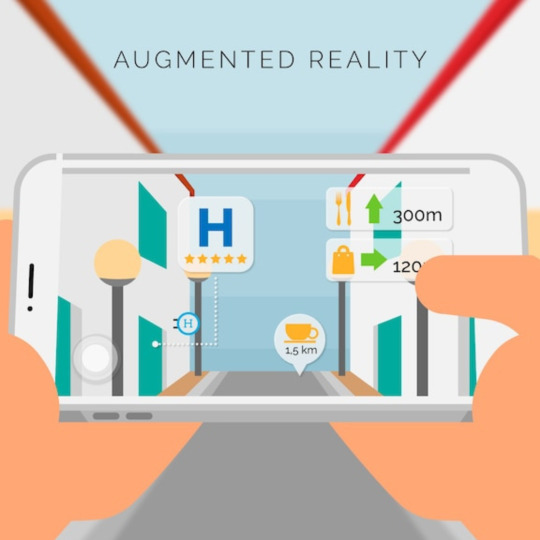
Augmented Reality (AR) has evolved from a futuristic concept to a powerful technology reshaping how we interact with the world around us. Unlike virtual reality that creates entirely new environments, AR overlays digital information onto our real-world view, creating immersive experiences that blend the physical and digital realms seamlessly.
From healthcare to retail, AR development has unlocked countless possibilities that were once confined to science fiction. Let's explore the most impactful real-world applications of AR technology and discover how businesses across various industries are leveraging this innovation to enhance user experiences and drive growth.
Healthcare: Revolutionizing Medical Training and Patient Care
The healthcare industry has embraced AR technology with remarkable results. Surgeons now use AR-powered visualization tools to overlay critical patient data directly onto their field of view during complex procedures. This real-time information access allows for more precise operations and better patient outcomes.
Medical training has also been transformed through AR applications. Students can now practice procedures on virtual patients, examining 3D anatomical models that appear to float in real space. This hands-on approach to learning accelerates skill development while reducing the need for cadavers and expensive equipment.
AR development in healthcare extends to patient rehabilitation as well. Physical therapy sessions now incorporate interactive AR exercises that make recovery more engaging and trackable, helping patients stay motivated throughout their healing journey.
Retail and E-commerce: Try Before You Buy
The retail sector has witnessed one of the most consumer-facing implementations of AR technology. Virtual try-on experiences have revolutionized online shopping, allowing customers to see how clothes, accessories, or makeup will look on them before making a purchase.
Furniture retailers like IKEA have pioneered AR applications that let customers visualize how pieces will look in their actual living spaces. This technology has significantly reduced return rates and increased customer satisfaction by bridging the gap between online browsing and in-store experiences.
Beauty brands have also invested heavily in AR development, creating virtual makeup tools that help customers experiment with different looks from the comfort of their homes. These applications have proven especially valuable during times when physical store visits were limited.
Education: Making Learning Interactive and Engaging
Educational institutions are leveraging AR to create immersive learning experiences that capture students' attention like never before. History lessons come alive when students can walk through ancient Rome or witness historical events unfold in their classroom.
Science education has particularly benefited from AR applications. Students can now manipulate 3D molecular structures, explore the human circulatory system, or observe celestial bodies up close. This visual and interactive approach to learning helps students grasp complex concepts more effectively than traditional textbook methods.
Language learning apps have incorporated AR features that translate text in real-time through smartphone cameras, making foreign language acquisition more practical and contextual.
Manufacturing and Industrial Applications
The manufacturing sector has embraced AR development to streamline operations and improve worker efficiency. Assembly line workers can now access step-by-step instructions overlaid directly onto their work area, reducing errors and speeding up production processes.
Maintenance and repair operations have been transformed through AR-guided procedures. Technicians can see exactly which components need attention, access repair manuals hands-free, and receive remote assistance from experts who can see what they're seeing through AR-enabled devices.
Quality control processes have also benefited from AR technology, with inspectors able to compare products against digital specifications in real-time, ensuring higher accuracy and consistency.
Real Estate: Virtual Property Tours and Visualization
The real estate industry has found innovative ways to implement AR technology, particularly in property visualization and marketing. Potential buyers can now tour properties remotely, visualizing renovations or furniture placement before making decisions.
Architects and developers use AR applications to show clients how proposed buildings will look in their actual environments. This capability has proven invaluable for city planning and gaining community approval for new developments.
Real estate agents equipped with AR tools can provide enhanced property tours, overlaying information about utilities, property history, and neighborhood amenities directly onto their clients' view of the space.
Gaming and Entertainment: Beyond Pokemon GO
While Pokemon GO introduced millions to AR gaming, the entertainment industry has continued pushing boundaries with more sophisticated applications. Location-based AR games now create city-wide treasure hunts and interactive storytelling experiences that blend digital narratives with real-world exploration.
Theme parks and museums have integrated AR features into their attractions, creating personalized experiences that adapt to visitor preferences and enhance traditional exhibits with digital information and interactive elements.
Live events and concerts now incorporate AR elements that audience members can access through their devices, adding layers of visual effects and information to enhance the overall experience.
Marketing and Advertising: Creating Memorable Brand Experiences
Brands have discovered that AR development offers unique opportunities to create memorable marketing campaigns. Interactive advertisements allow consumers to engage with products in ways that traditional media cannot match.
QR codes and AR markers in print advertisements now trigger immersive brand experiences, while social media filters have become powerful tools for viral marketing campaigns that encourage user-generated content.
The Future of AR Development
As AR technology continues advancing, we can expect even more innovative applications across industries. Improved hardware capabilities, faster processing speeds, and more sophisticated software development tools are making AR experiences more accessible and compelling.
The integration of artificial intelligence with AR development is opening new possibilities for context-aware applications that can understand and respond to user environments more intelligently.
Conclusion
Augmented Reality has moved far beyond experimental technology to become a practical tool driving real business value across numerous industries. From enhancing medical procedures to revolutionizing retail experiences, AR development continues creating new possibilities for human-computer interaction.
As businesses recognize the competitive advantages that AR technology offers, investment in AR development will likely accelerate, leading to even more innovative applications that we can only imagine today. The question isn't whether AR will continue transforming industries, but rather which sector will discover the next breakthrough application that changes everything.
#vr games#game#unity game development#blockchain#metaverse#nft#multiplayer games#gaming#mobile game development
0 notes
Text
Understanding Your Biometric Visa Appointment: What to Expect
Understanding Your Biometric Visa Appointment: What to Expect
In today's globalized world, international travel and migration are more common than ever. As a result, visa application processes have become more stringent to enhance security and streamline identification. A crucial component of this modern visa system is the biometric visa appointment. If you're applying for a visa to numerous countries, from the Schengen Area to the United States, UK, Canada, Australia, and beyond, you'll almost certainly encounter this step. But what exactly does it entail, and why is it so important?
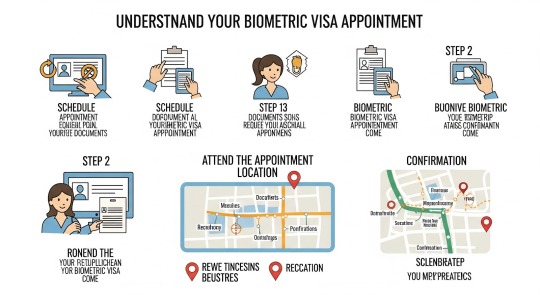
What Are Biometrics in the Context of Visas?
Biometrics refers to unique physical characteristics that can be used to identify an individual. In the context of visa applications, the most common biometrics collected are:
Fingerprints: Typically, all ten fingerprints are scanned digitally.
Facial Image: A digital photograph of your face is taken, adhering to specific guidelines (e.g., neutral expression, no obstructions).
These biometric data points are collected to create a unique and secure identifier for you. They help verify your identity, prevent fraud, and contribute to global security efforts by allowing immigration authorities to cross-reference databases and ensure that the person applying for the visa is indeed who they claim to be. This also helps in establishing a comprehensive record for future travel and border control.
Why is a Biometric Visa Appointment Necessary?
The inclusion of biometric data in visa applications serves several vital purposes:
Enhanced Security: By linking your unique biological data to your visa application, it becomes much harder for individuals to assume false identities or use fraudulent travel documents. This helps prevent terrorism and other criminal activities.
Accurate Identification: Biometrics provide an undeniable form of identification. This is particularly useful at border crossings, where quick and accurate verification of travelers is essential.
Streamlined Border Control: Automated systems can quickly match your live biometrics with the data stored on your visa, making entry and exit procedures more efficient.
Combating Illegal Immigration: Biometric data helps track individuals and prevent overstaying or re-entry for those who have violated immigration laws.
Preventing Visa Shopping: It helps identify individuals who might attempt to apply for visas under different identities after being denied by one country.
Who Needs a Biometric Visa Appointment?
The requirement for a biometric visa appointment depends on the destination country and your nationality. However, it's a widespread practice for most long-stay visas and many short-stay visas (like Schengen visas). Countries like the UK, Canada, Australia, New Zealand, the US, and all countries in the Schengen Area typically require biometrics. Even some specific non-Schengen European countries and a growing number of Asian countries are adopting this system. Always check the specific requirements of the embassy or consulate of the country you intend to visit.
What Happens at a Biometric Visa Appointment?
The appointment itself is usually straightforward and quick. It generally takes place at a designated Visa Application Centre (VAC) or directly at the embassy/consulate. Here’s a general overview of what to expect:
Arrival and Check-in: You'll arrive at the designated center with your appointment confirmation and passport. Security checks will be performed.
Document Verification: Your appointment letter and passport will be verified. Some centers may also check if you have all the necessary supporting documents for your visa application.
Fingerprint Collection: You will be guided to a digital fingerprint scanner. You'll place your fingers on the scanner, usually one by one, and then four fingers at a time. The process is ink-free and quick.
Facial Image Capture: A digital photograph will be taken. Ensure your face is clear, with no hair obscuring it, and maintain a neutral expression. No glasses (unless for medical reasons), hats, or head coverings (unless for religious purposes) are usually allowed.
Fee Payment (if applicable): Sometimes, a separate biometric fee might be collected at this stage if it wasn't paid online during the initial application.
Confirmation: You may receive a receipt confirming that your biometrics have been successfully captured.
How to Prepare for Your Appointment
Book in Advance: Biometric appointments often require prior booking, especially during peak seasons. Book your slot well in advance of your intended travel date.
Bring Required Documents: Always carry your appointment confirmation letter, a valid passport, and any other documents specified by the visa authority (e.g., visa application form, supporting documents).
Personal Hygiene: Ensure your hands are clean and free of cuts or temporary markings that might affect fingerprint scanning.
Dress Appropriately: While there's no strict dress code, presentable attire is always advisable. For your photograph, ensure your face is clearly visible.
Arrive on Time: Punctuality is key. Arriving late may result in your appointment being cancelled or rescheduled.
Follow Instructions: Listen carefully to the staff's instructions at the center to ensure a smooth process.
The biometric visa appointment is a standard and essential part of the visa application process for many countries. By understanding its purpose and knowing what to expect, you can approach this step with confidence, contributing to a secure and efficient international travel system.
0 notes
Text
Unfolding the Digital Core of Healthcare Operations with Grapes IDMR
Enter the hospital data handling of the future with Grapes IDMR, the smart digital medical records solution by Grapes Innovative Solutions. Conceived for healthcare facilities that want a smooth switch from paper-based to digital operations, Grapes IDMR brings electronic documents, clinical information, and patient records together into one unified hub. It powers physicians, nurses, and admin staff with instant access, reliable entries, and unified patient care coordination. With a user-centric approach and real-time tracking of records, this software reimagines digital healthcare records in hospital chains, clinics, and multispecialty configurations with utmost accuracy and security.
Closing Healthcare Gaps through Intelligent Documentation
The contemporary hospital environment relies not only on clinical skills but also on precise, timely data management. At its core is Grapes IDMR, a powerful digital documentation solution handpicked by Grapes Innovative Solutions. The program redefines patient record interaction among healthcare professionals flipping the script from fragmented paperwork to a secure, intuitive, and integrated platform. With increasing focus on quicker decision-making and accurate care provision, Grapes IDMR presents itself as something more than a documentation instrument. It becomes the healthcare institution's nervous system, where all clinical decisions are backed by immediately accessible and current medical histories. Grapes IDMR diminishes human error through automation, digitization, and intelligent tracking, thereby supporting clinical workflows and ensuring that each patient record adds to a larger continuity of care.
Personalization Meets Utility in Medical Record Systems
Each healthcare institution is different whether it is a multispecialty hospital, single-doctor practice, or a diagnostic laboratory. Grapes IDMR has been developed with varying needs of each setup in mind. It provides scalable modules that fit into various medical departments and administrative processes. From OPD reports to IPD progress notes, nursing shifts to discharge summaries, all get recorded digitally, time-stamped, and stored safely. The platform provides role-based access wherein doctors, pharmacists, nurses, and clerks interact with varied modules without intruding upon one another's working space. This architecture ensures transparency, responsibility, and improved time management. With customization being its foundation, Grapes IDMR accommodates any healthcare unit to evolve from the conventional recordkeeping systems to fully digital processes without needing overabundant IT interference. Clinical documentation is not merely about symptom capture. It deals with treatment procedures, medication history, diagnostic test results, operative procedures, and post-treatment follow-ups. Grapes IDMR intelligently consolidates all of these into a holistic, structured electronic format. Therefore, care teams are constantly presented with context information so that they can concentrate on patient outcomes instead of documentation anxiety.
Data Intelligence Promotes Smarter Clinical Decisions
With records digitized, structured, and made searchable, healthcare becomes data-driven. Grapes IDMR is exceptional in providing user-friendly dashboards and report generation tools beyond mere recordkeeping. It converts patient information into actionable intelligence, aiding doctors and medical officers in trends, history comparisons, and follow-up planning. Grapes IDMR distinguishes itself from traditional documentation platforms by focusing on data usability. With its simple user interface and responsive design, the retrieval of multi-visit patient records becomes instant and intuitive. Plus, by picking up real-time inputs from various departments, the system eliminates gaps or overlaps in a patient's care chronology. Inclusion of lab reports, imaging diagnostics, and prescription histories within the same patient profile further facilitates treatment decisions. This combination reduces errors, accelerates the diagnosis process, and promotes evidence-based medical treatment. Administrative staffs receive visibility into patient flow, departmental productivity, and documentation delays with Grapes IDMR. These advantages enable improved staff allocation, workflow refinement, and policy implementations within the healthcare organization.
Secure, Scalable, and Compliant Record Management
Security and compliance are paramount when dealing with personal health information. Grapes IDMR includes robust encryption practices, multi-level authentication, and audit trails to provide all-around data privacy and accountability. It is compliant with healthcare regulations and designed to manage the sensitive content of clinical documentation among multi-branch hospital locations. The cloud-based infrastructure provides the scalability to allow healthcare institutions to increase their operations without having to replace their record management system. Whether it's adding an additional wing to a hospital or adding a chain of clinics, Grapes IDMR adjusts without interrupting present workflows. In addition, backups and disaster recovery procedures make sure that no information is ever lost or hacked. With Grapes IDMR, hospitals can confidently pursue digital innovation while ensuring they meet all legal and regulatory obligations tied to patient records.
Conclusion
Grapes IDMR is not merely a product it's a digital platform for hospitals to standardize, protect, and automate their clinical documentation processes. With functionality that extends across medical, nursing, and administrative verticals, it provides a single language of care that fuels hospital efficiency and patient satisfaction. As healthcare institutions shift toward interconnected ecosystems, investing in Grapes IDMR is not merely a technological advancement, but a strategic imperative.
For complete hospital automation and seamless digital medical record integration, explore more about Grapes Innovative Solutions.
FAQs
How is Grapes IDMR different from a regular EMR system?Grapes IDMR offers a specialized, fully structured documentation system that focuses on real-time clinical entries, role-based access, and multi-departmental integration, making it more comprehensive than a traditional EMR.
Can Grapes IDMR be used by both small clinics and large hospitals?Yes, the system is designed to be modular and scalable. It adapts effortlessly to different facility sizes, from single-doctor clinics to large multispecialty hospitals.
Does Grapes IDMR offer integration with lab, pharmacy, and billing systems? Absolutely. Grapes IDMR is designed to work in sync with laboratory, pharmacy, radiology, and billing modules, ensuring a seamless and unified hospital ecosystem.
#GrapesIDMR#DigitalMedicalRecords#HealthcareSoftware#HospitalInformationSystem#ClinicalDocumentation#EMRSoftware#PatientRecordManagement#MedicalSoftwareSolutions#HospitalDigitization#GrapesInnovativeSolutions#EHRPlatform#HealthcareAutomation#IntelligentEMR#ElectronicHealthRecord#SecureHealthRecords#MedicalDataSoftware#HospitalWorkflow#SmartHospitalTech#PaperlessHealthcare#IDMRSoftware#HealthIT#SmartDocumentation#HospitalSolutions#HospitalDataTracking#DoctorFriendlySoftware
0 notes
Text
Mastering Dental Assistant Radiology: Essential Skills and Knowledge for Success
Mastering Dental Assistant Radiology: Essential Skills and Knowledge for Success
In the dynamic field of dental healthcare, dental assistants play a crucial role in ensuring smooth operations and excellent patient care. Among their many responsibilities, mastering dental radiology is essential. This article explores the skills and knowledge necessary for success in dental assistant radiology and highlights the benefits of becoming proficient in this vital area.
What is Dental Radiology?
Dental radiology involves using X-rays to visualize the structures within the teeth, gums, and jawbone. This imaging technique is key for diagnosing dental issues, planning treatments, and monitoring dental health.
Essential skills for Dental Assistant Radiology
To excel in dental radiology, dental assistants must acquire a variety of technical and soft skills. Here’s a breakdown of what you should focus on:
1. Technical Proficiency in Radiographic Techniques
Knowledge of Equipment: Understanding how to operate various radiographic equipment, including digital X-ray systems.
Image Acquisition: mastering the correct positioning and exposure settings to capture high-quality radiographs.
Film Processing: Knowing the steps in developing film-based radiographs and ensuring proper management of digital images.
2. Understanding Safety Protocols
safety is paramount in dental radiology. Assistants must be well-versed in:
Radiation Safety: Utilizing protective equipment like lead aprons and thyroid collars to minimize exposure.
Regulatory Compliance: Following guidelines established by organizations like the American Dental Association (ADA) and the National Council on Radiation protection and Measurements (NCRP).
3. Effective Communication Skills
Patient Interaction: Explaining procedures to patients to alleviate anxiety and encourage cooperation.
Collaborating with Dentists: Being able to clearly communicate findings and collaborate on treatment plans with the dental team.
Benefits of Mastering Dental Assistant Radiology
Proficiency in dental radiology not only enhances your value as a dental assistant but also greatly benefits your practise. Here are some key advantages:
Improved diagnostic Accuracy: High-quality radiographs lead to better diagnosis and treatment planning.
Enhanced Patient Care: efficient and confident imaging can improve the overall patient experience.
Career Advancement: Specializing in radiology opens doors to advanced positions and increased earning potential.
Practical Tips for Success in Dental Radiology
Here are some practical strategies to enhance your skills in dental radiology:
Continuous Education: Enroll in workshops and courses related to dental radiology to stay updated on the latest technologies.
Hands-on Practice: Seek out opportunities for practical experience to improve your proficiency in radiographic techniques.
Networking: Connect with other dental professionals to share knowledge and experiences related to radiology.
Case Studies: Real-World Applications
To understand the impact of dental assistant radiology, let’s review two case studies:
Case
Diagnosis
Outcome
Case 1: Toothache
Cavity detected via X-ray.
Root canal treatment resolved the issue.
Case 2: Jaw Pain
Impacted wisdom tooth identified.
Surgical extraction was successful.
First-Hand Experience: A Day in the Life of a Dental Assistant
Let’s take a closer look at a typical day for a dental assistant focused on radiology:
Morning Startup: Review the daily schedule and prepare the radiographic equipment.
patient Interaction: Greet patients and explain the radiology procedures.
Imaging: perform radiographic imaging as prescribed by the dentist.
Document Results: Store and manage radiographic images for future reference.
Team Collaboration: Discuss findings with the dentist and participate in treatment planning.
Conclusion
Mastering dental assistant radiology is a vital aspect of excelling in the dental field. By developing technical skills, ensuring safety compliance, and enhancing communication abilities, dental assistants can significantly improve patient care and outcomes. Embarking on this journey not only boosts your confidence but also contributes to the ��overall success of your dental practice. With continuous education and practice,you can become an invaluable asset in the world of dental radiology.
youtube
https://dentalassistantclasses.net/mastering-dental-assistant-radiology-essential-skills-and-knowledge-for-success/
0 notes
Text
The Role of QMS in Enhancing Product Quality for Electronics & Appliances

The electronics & appliances manufacturing sector has been highly competitive for a long time, with the intensity only increasing in recent years. Makers in this industry understand product quality can make or break a brand’s reputation, and hence a strong commitment to quality to help build consumer trust and reduce cost of recalls/defects, is needed.
However, ensuring consistent product quality without a specialized tool isn’t easy. It is anyway quite complex due to the presence of factors like supply chain variability, evolving consumer expectations, and tightening regulatory standards. And when quality lapses, even the well-established brands face setbacks, leading to recalls and reputational damage.
As market demands are fast evolving, driven largely by various trends like smart home integration, and sustainability awareness, electronics & appliances manufacturers need solid systems in place to maintain quality. Because even the best in the business struggle to keep pace without an integrated electronics and appliances Quality Management System (QMS).
Challenges to Product Quality without a QMS for Electronics and Appliances
Some of these big businesses may have state-of-the-art production lines, but without a QMS software at their disposal, they are forced to employ an old-school method of working with fragmented stuff like paper-based audits, siloed data, and ad-hoc corrective actions. This leads to:
Invisible quality risks, as without real-time dashboards, emerging defect trends remain hidden until customer complaints come in.
Missed compliance deadlines, which in turn risks regulatory fines when critical documents like calibration logs or compliance certificates can’t be produced on demand.
Delayed NC & CAPA, with unaddressed non-conformances, and unnoticed corrective-preventive actions resulting in recurring defects and substandard product quality.
Inconsistent training that results in operator errors due to rapid product changes not matching the updated training.
In such a scenario, it goes without saying that dedicated quality management software for electronics and appliances solves these pain points. How? Keep reading.
Role of QMS in Enhancing Product Quality in Electronics & Appliances Manufacturing
An effective QMS for electronics and appliances transforms quality from a reactive process into a proactive, integrated one, which is part of every stage of production, with all its modules seamlessly working together. Let’s see how:
By centralizing Document Management & Standard Operating Procedures (SOPs), QMS ensures every stakeholder has access to latest assembly guidelines and inspection checklists. As a result, costly errors caused by outdated paperwork are eliminated, paving way for consistent adherence to best practices.
When non-conformances occur, the NC & CAPA module captures them automatically and launches structured root-cause investigations. Corrective and preventive actions are then assigned, tracked, and closed within the platform, thus guaranteeing permanent resolutions rather than temporary fixes.
The Training Management module aligns skill development with product evolution; as new IoT-enabled or energy-efficient appliances roll off the line, required courses and certification renewals are automatically scheduled, keeping teams proficient and compliant.
Change Management and Risk Management work hand-in-hand to control every engineering revision or component substitution. Each change request undergoes documented review, risk assessment, and traceable approval before implementation, drastically reducing the chance of design flaws or firmware glitches reaching customers.
Calibration Management Software further improves precision by automating equipment-maintenance schedules and securely storing certificates to prevent out-of-tolerance readings.
Customer satisfaction gets a boost through Complaint and Audit Management. Complaint registration, documentation and categorization enables rapid investigation, timely resolution, and proactive recalls if needed. At the same time, digital audit trails and automated checklists streamline internal, external, and regulatory audits, ensuring you’re always ready for inspection.
Finally, Inspection Management simplifies setting up quality tests, organizing inspection plans, and digitizing various aspects of the inspection process. Detailed inspection reports offer meaningful information, empowering teams to spot trends, trigger immediate corrections, and foster a continuous-improvement culture.
In sum, a complete QMS software for electronics and appliances lifts product quality at every step, making zero-defect output possible.
Benefits of a Web-Based QMS for Electronics & Appliances
By adopting an electronics and appliances quality management system, manufacturers unlock:
Instant, anywhere access: Quality teams, engineers, and auditors collaborate in real time from any location.
Seamless data integration: One source of truth for all quality records accelerates decision-making and continuous improvement.
Proactive quality control: Intuitive dashboards and automated alerts catch deviations in production lines before they snowball into recalls.
Regulatory peace of mind: Extensive audit logs and compliance records are always at your fingertips.
Enhance Product Quality with TecWork’s QualityPro QMS
QualityPro QMS for electronics and appliances by TecWork offers one unified platform tailored to your unique needs. If you’re looking to implement a full-scale quality management software systems, know that our solution delivers agility and control, and lets you enhance product quality effortlessly.
0 notes
Text
A Step-by-Step Guide to Digital Mammography
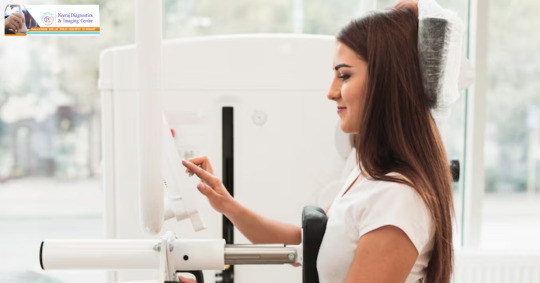
Digital mammography is a vital diagnostic tool in the early detection of breast cancer. Unlike traditional film mammography, digital mammography uses advanced digital technology to capture and store breast images electronically. This allows for better image clarity, quicker processing, and easier sharing with healthcare professionals. For women over 40, or those with a family history of breast cancer, regular mammograms can be life-saving.
Here’s a step-by-step guide to what you can expect during a digital mammography procedure:
Step 1: Scheduling Your Appointment
The first step is to book your appointment at a reputed diagnostic facility. If you're based in Madhya Pradesh, look for digital mammography specialists who are experienced and equipped with the latest technology. Many clinics also offer additional services like breast ultrasound and sonography for a more comprehensive evaluation.
Step 2: Preparing for the Procedure
On the day of your appointment, avoid applying deodorants, lotions, or powders on your underarms or breasts. These products can interfere with image quality. Wear a two-piece outfit so you only need to remove your top during the scan. Also, bring along previous mammogram results if you have them, as this helps the radiologist compare and detect any changes.
Step 3: The Mammography Procedure
Once at the clinic, a trained radiologic technologist will guide you through the procedure. You’ll be asked to stand in front of the mammography machine. Your breast will be placed on a flat surface and gently compressed with a paddle to spread out the tissue. This compression is essential for clear images and takes only a few seconds.
Each breast is usually imaged from at least two angles. Though the compression might cause slight discomfort, it is brief and not harmful. The entire procedure typically takes about 20 minutes.
Step 4: Image Review and Analysis
After the images are captured, they are digitally transmitted to a radiologist for evaluation. One of the key advantages of choosing digital mammography specialists in Indore is their ability to enhance and zoom in on the digital images, allowing for better detection of abnormalities.
In some cases, additional images or a follow-up ultrasound may be needed for a more detailed assessment. This is often done at the same facility, especially if it is recognized as the best sonography centre in Indore.
Step 5: Receiving Your Results
Your results may be available within a few days, either through a secure online portal or via your referring doctor. If any concerns are detected, your healthcare provider will guide you through the next steps, which may include further imaging or a biopsy.
Digital mammography is a powerful tool in breast health screening. Early detection through routine screenings significantly increases the chances of successful treatment. Whether you’re scheduling your first mammogram or are due for a regular check-up, choose a reputable facility with digital mammography specialists. Also, consider centres that offer a full range of diagnostic services and are recognized as the best sonography centre in Indore for a seamless and comprehensive experience.
#growth scan pregnancy indore#diagnostic centre in indore#aarohan fetal medicine centre indore#best sonography centre in indore
0 notes
Text
Google 360 Virtual Tours: A Complete Guide to Elevating Your Online Presence
What Is a Google 360 Virtual Tour?
A Google 360 Virtual Tour is an immersive, panoramic photograph revel in your employer, published to your Google Business Profile, Google Maps, and exceptional online structures. It allows clients to actually "walk through" your place using their telephone, computer, or VR headset.
How Does It Appear on Google?
Once published, your tour appears directly in:
Google Search results
Google Maps
Google Business Profile (formerly Google My Business)
Who Can Benefit from It?
Businesses of all sizes and sectors can gain, together with:
Retail stores (to showcase format and product range)
Restaurants (to expose environment and seating)
Gyms/Studios (to focus on space and system)
Hotels
Key Benefits of a Google 360 Virtual Tour
1. Enhances Local search engine marketing Performance
Google favors profiles with interactive and visual content material.
Virtual tours increase the chances of performing in the nearby 3-percent.
2. Improves Customer Engagement
Keeps traffic for your profile longer, which alerts value to search engines.
People have interaction extra with visuals than with textual content alone.
3. Drives Real-World Visits
Customers are much more likely to visit in the event that they’ve had a “preview” of the area.
4. Builds Trust and Transparency
An actual look into your area shows you have nothing to cover.
Ideal for industries wherein atmosphere and cleanliness count (like clinics or salons).
5. Provides a Competitive Advantage
Not all businesses have a excursion, so it enables you stand out in local search results
How Is a Virtual Tour Created?
Step-by-Step Process:
Consultation and Quote
A licensed Google photographer visits or assesses the place surely.
On-web page Photo Shoot
360-diploma panoramic images capture the usage of professional devices.
Post-Production Editing
Images are edited, shade-corrected, and stitched together.
Publishing
The excursion is uploaded in your Google profile and sent to you for internet site or social sharing
How to Embed a 360 Tour on Your Website
Once posted on Google Maps:
Visit your enterprise list on Google Maps.
Click “Share” → “Embed a Map.”
Copy the HTML iframe code and paste it into your internet site’s backend.
Preparing Your Space for the Tour
Make your area look its great:
Clean all regions thoroughly.
Turn on lighting fixtures for the pleasant lights.
Remove non-public or private information.
Stage your area to reveal its specific functions.
Temporarily close to foot visitors if feasible.
Real-World Stats & Results
Without entry with virtual tour (Source: Google) receives 87% more views.
After seeing the tour, there will probably be more users.
Customers live for a long time, which promotes conversion.
Where Else Can You Use Your Tour?
Besides Google:
Embed to your internet site and touchdown pages
Share on social media systems like Facebook and LinkedIn
Use in e-mail advertising and marketing to growth click on-thru rates
Include on your sales pitch for bookings and event planning
Final Thoughts
A Google 360 Virtual Tour is more than a visual gimmick—it’s a strategic advertising asset. It gives potential clients a motive to consider your logo and encourages them to have interaction, visit, or purchase.
Conclusion
Investing in a Google 360 Virtual Tour is one of the smartest procedures to show off your space, construct acceptance as true with, and raise your visibility online. Whether you are a café owner, resort manager, or retail shopkeeper, offering a virtual enjoy will let you stand out in an aggressive market.If you're looking for the best Google 360 virtual tour provider in Kochi,be sure to choose a certified professional with proven experience in delivering high-quality, interactive tours that meet Google’s standards.. Let your business talk for itself—genuinely!
0 notes
Text
Item #: SCP-7439
Object Class: Keter
Special Containment Procedures:
SCP-7439-1 (the original wax cylinder) is to be stored in a lead-lined, soundproof container within Site-43’s Memetic Anomalies Wing. Under no circumstances is SCP-7439-1 to be played, replicated, or physically handled without Level 4/7439 approval. All digital backups, transcriptions, and waveform derivatives have been scrubbed from Foundation servers following Incident 7439-Havel. Any surviving media is to be treated as cognitohazardous and incinerated on discovery.
Testing is suspended indefinitely. Exception requests must be reviewed by the Ethics Committee and O5 Command.
Description:
SCP-7439 refers to an anomalous auditory phenomenon encoded on a wax phonograph cylinder (designated SCP-7439-1), believed to be a field recording of a “siren song” recovered from the littoral region of an uncharted island. The recording is approximately 3 minutes and 51 seconds in length and is labeled “Track 4: Littoral Hymn.”
When played, SCP-7439 induces an escalating compulsion in listeners, primarily the desire to submerge themselves in water. Exposure typically results in psychogenic euphoria, obsessive humming, and in 47% of cases, fatal self-drowning. Listeners consistently describe SCP-7439 as “the most beautiful sound imaginable” or “a memory of somewhere I’ve never been.”
The effect is memetically transferable through direct audio exposure, physical transcription of the waveform, or even tactile interaction with etched representations of its grooves. Intensity correlates with listener isolation—single-subject tests produce catastrophic results, while group exposure disperses the effect across individuals, often weakening the compulsion.
Addendum 7439.1: Discovery
SCP-7439-1 was acquired by Foundation front “Operative Curio” after a failed private experiment conducted by the ████████ Estate, a private group funded by reclusive philanthropist █████ ██████. The initial test subject, a professional diver, drowned himself in a shallow therapy pool shortly after exposure. Security footage showed him weeping with joy and whispering “Finally.”
The recording was one of several recovered. Others—allegedly “Tracks 5 through 8”—remain unrecovered. The benefactor has since vanished.
Addendum 7439.2: Incident 7439-Havel
Dr. T. Havel attempted to transcribe the waveform manually over a 72-hour period without rest. She claimed the grooves “communicated through touch,” bypassing language and cognition. On Day 4, she was discovered having carved a near-perfect replica of the waveform into her office walls using her fingernails and teeth. Subject was sedated and later expired from cardiac arrest following sleepwalking into the Site-43 koi pond.
Her final notes read:
“It’s not a song. It’s an invitation.”
Addendum 7439.3: Masquerade Events
Recovered surveillance and anonymous testimonies indicate that SCP-7439-1 was played at several underground masquerade gatherings prior to containment. These parties featured specific protocols: no identities, no digital devices, and strictly analog playback. Witnesses report participants entering dissociative trances, disrobing, and vanishing near open water. In one event, twenty-three sets of clothing were found by a cliffside pool; none of the wearers were recovered.
Status of SCP-7439-1:
The cylinder’s grooves have begun to smooth and fade. Spectrographic analysis indicates an adaptive waveform, no longer static. The recording evolves in minor variations upon each playback. Attempts to digitally capture the changes result in corrupted files or blank spectrograms.
Current Hypothesis: SCP-7439 is not a fixed media object, but a communicative vector—a message or signal becoming more complete with each listener.
Further exposure is strongly discouraged.
⸻
“You hear it once. But it never stops hearing you.” – Dr. B. Kalst, Site-43 Director
0 notes
Text
A Franchise Management System Built for Tea Chains
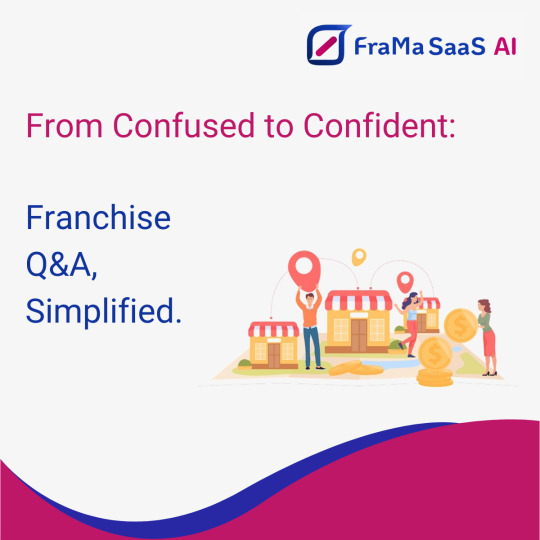
Our Franchise Management System addresses these challenges with an all-in-one digital platform that brings together every aspect of franchise operations. Whether you’re running 5 stores or 500, our system ensures that your brand maintains consistency, quality, and control at every location.
Key Capabilities That Support Tea Franchises:
Standardized Recipes & SOPs: Ensure every outlet follows the same preparation and service procedures with centrally managed documentation.
Centralized Order & Inventory Management: Track ingredient usage, reorder supplies, and avoid shortages or wastage.
Real-Time Sales Dashboard: Monitor store-wise performance and customer trends across the entire network.
Automated Promotions & Loyalty Campaigns: Launch and manage offers uniformly while capturing customer preferences.
Franchisee Onboarding & Training Tools: Help new partners hit the ground running with structured onboarding workflows.
Transparent HQ-Franchisee Communication: Share updates, SOP changes, and marketing material instantly from one platform.
Conclusion
With our system, tea franchise owners can focus on what they do best—serving delightful beverages—while the backend operations run on autopilot. The result? Better customer experiences, improved store efficiency, and faster, smarter scaling.
From the corner tea joint to a national chain, consistency is what turns a tea shop into a trusted brand. Our Franchise Management System helps make that consistency scalable, sustainable, and smart.
Ready to brew success at every outlet? Let’s transform your tea franchise into a growth-ready powerhouse—one cup at a time.
0 notes